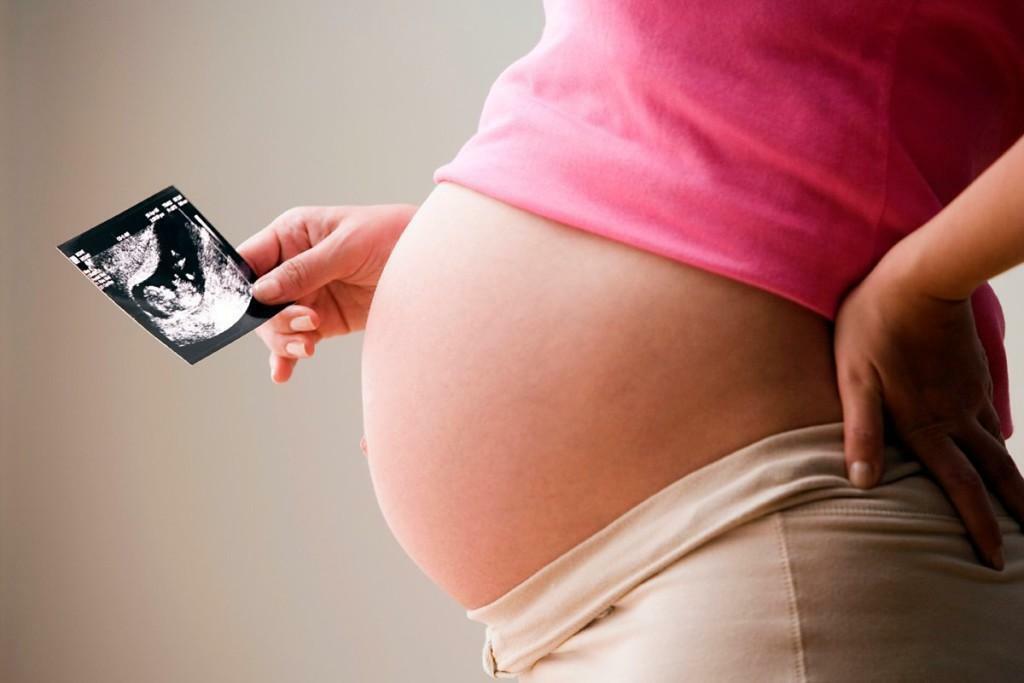Defeat norovirus infection reaches whole groups of people. Despite the short period of development, a person feels significant discomfort, he is worried about the characteristic symptoms.
It is necessary to go to the hospital to see a therapist so that the doctor selects the most effective treatment. The main thing in the fight against norovirus infection is to prevent severe dehydration. Without the right therapy, the infection has serious consequences.
Record content:
- 1 General information
- 2 Difference from rotavirus
- 3 Routes of transmission and incubation period
- 4 Symptoms of Norovirus Infection
- 5 Danger of disease
- 6 Dehydration with Norovirus Infection
- 7 Diagnostics
- 8 Disease treatment principles
- 9 What drugs should not be taken for enterovirus infections
- 10 Diet
- 11 Norovirus infection video
General information
Norovirus infection (norovirus, "winter vomiting disease") is a disease that affects the gastrointestinal tract. It occurs in the same way in adults and children. A very contagious pathology that in most cases goes away on its own.
During the period of infection, it is important to prevent dehydration of the body. Therefore, it is better to seek advice from a physician or pediatrician, undergo a comprehensive examination and treatment, selected by a specialist.
The following forms of the course of the disease are distinguished:
| Name | Description |
| Light form | It is diagnosed in 50-60% of cases. The pathological condition is characterized by high fever and minor painful sensations in the abdomen. Vomiting is always present, rarely accompanied by diarrhea. Full recovery of a person occurs in 1-3 days. |
| Moderate form | Moderate norovirus infection is accompanied by high fever, symptoms of intoxication, repeated vomiting and upset stools, and stomach ache. The illness lasts 2-5 days. |
| Heavy | All clinical signs of norovirus infection are present. Additionally, a strong dehydration of the body is added. |
| Erased | Pathological processes develop slowly and imperceptibly. The human condition is satisfactory. In some situations, nausea occurs, sometimes stool is disturbed, body temperature is normal. |
Urgent hospitalization of the patient is required in case of the development of a severe form of norovirus.
Difference from rotavirus
Norovirus infection (symptoms and treatment in severe situations require a comprehensive examination) course and clinical signs resembles rotavirus infection, however, these pathological conditions have distinctive features: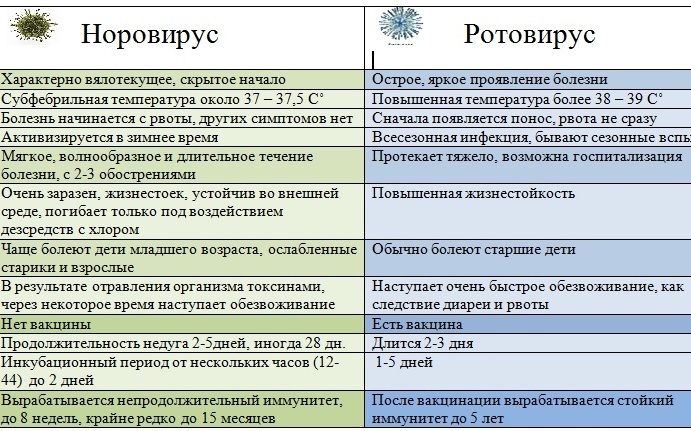
| Norovirus | Rotavirus |
|
|
It is impossible to establish a diagnosis on your own. A physician or pediatrician will help determine the disease. It is important to go to the hospital in a timely manner, undergo a comprehensive examination and start treatment. In some situations, it is enough to monitor the patient's condition, without carrying out therapy, the main thing is to prevent dehydration of the body.
Routes of transmission and incubation period
Norovirus infection (symptoms and treatment require medical advice, examination) begins to develop as soon as it enters the human body.
Infection occurs in the following ways:
| Name | Description |
| Food | Infection of the human body occurs when eating unwashed food (vegetables, fruits). |
| Water | Pathogenic bacteria enter the body with dirty water, where pathogens of pathological processes are present. |
| Contact and household | The source of infection is dishes, household items, unwashed hands. |
| Airborne | The infection is transmitted from a sick person to a healthy person during coughing, sneezing. |
| Transplacental | The transmission of pathogens occurs from mother to child during intrauterine development. It is not necessary for a pregnant woman to be ill; it is enough to be a carrier of the infection. Congenital pathology provokes the death of the child. |
A sick person is dangerous to others during an exacerbation of an infectious disease and over the next 48 hours. The incubation period lasts 24-48 hours after the infection of the organism.
People who have been diagnosed with immunodeficiency are sick for 120-180 days. In the case of chronic diarrhea, this time is extended to 2 years. Carriers of norovirus infection are dangerous to others for 3 weeks from the moment the body is infected with pathogenic bacteria.
Symptoms of Norovirus Infection
The first sign of a norovirus infection is a disorder in the functioning of the organs of the digestive system.

The following clinical symptoms are concomitant:
- severe nausea and vomiting, after which there is no relief;
- diarrhea with mucous impurities;
- severe pain in the abdomen of a cutting nature;
- increased drowsiness, headache, weakness in the body;
- loss of appetite, sometimes with loss of taste;
- slight increase in body temperature;
- painful urge to have bowel movements;
- sore throat, runny nose, increased lacrimation.
In most cases, pathological symptoms disappear on their own. In rare situations, the patient needs hospitalization and therapy if severe dehydration is observed.
Danger of disease
Complications and consequences arising against the background of norovirus infection depend on the degree of damage to the human body. The state of the immune system is also important, to what extent it is able to resist pathogens.
In most cases, complications after norovirus infection result from damage to the central nervous system:
- swelling of the brain tissue;
- encephalitis develops;
- convulsive syndrome occurs;
- hearing and visual functions deteriorate;
- epileptic seizures appear;
- the risk of paralysis in one side of the body increases.
Dislocation syndrome can occur in humans after norovirus. The pathological condition is characterized by the wedging of the brain, when there is a high probability of stopping the functioning of the cardiovascular or respiratory system.
Dehydration with Norovirus Infection
Norovirus infection (symptoms and treatment require the attention of a pediatrician or general practitioner) without timely therapy entails serious complications and consequences.
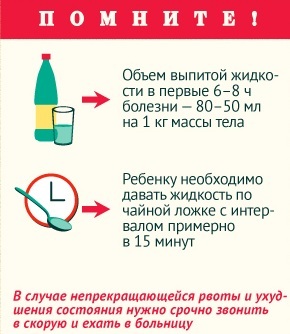
We are talking about dehydration of the body. Severe vomiting and diarrhea can help drain large amounts of fluid from the body, which is difficult to replenish.
Dehydration is a pathological condition in which there is less fluid in the human body compared to physiological norms.
The patient has the following accompanying symptoms:
- a sharp decrease in the level of excreted urine;
- urine becomes dark yellow;
- a person complains of general weakness in the body;
- the patient is tormented by thirst;
- blood pressure decreases;
- cardiac pulse weakens;
- the person loses consciousness.
For the patient's body, the loss of fluid in the amount of 20-25% is a lethal norm. A physician therapist will help restore the water-salt balance. The therapist will prescribe special solutions (Oralit, Gastrolit), which are infused through a dropper intravenously.
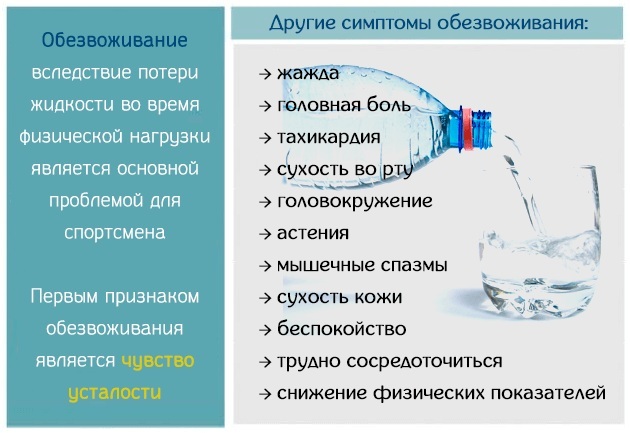
At home, folk recipes will help to restore the level of fluid in the body. It is necessary to add 2 tablespoons to 500 ml of boiled warm water. l. sugar, salt and ¼ tsp. l. soda.
It is also recommended to drink unsweetened compote prepared on the basis of dried fruits, tea without added sugar, rosehip or blueberry decoction. If severe vomiting suffers, it is necessary to replenish fluid reserves in small portions.
Diagnostics
A comprehensive examination for norovirus infection is necessary for everyone, adults and children. When the first clinical signs appear, it is important to consult a physician or pediatrician. If necessary, you will need to consult other specialized doctors (nephrologist, ophthalmologist, cardiologist, otolaryngologist).
To diagnose norovirus infection, patients are prescribed the following test activities:
| Name | Description |
| General analysis of blood and urine | Results will show neutrophilia, lymphocytosis and, in some situations, accelerated erythrocyte sedimentation rate (ESR). |
| Serological tests | Analyzes will help determine the pathogen, type and stage of development of an infectious disease. |
| Polymerase chain reaction (PCR) | Research will help determine the type of pathogens of pathological processes. |
| Immunoassay (ELISA) | The most informational research method that allows you to confirm the development of norovirus infection. |
| Instrumental diagnostic methods |
|
The danger of norovirus infection is that differential diagnosis is necessary. Many diseases cause similar clinical signs and abnormalities in the human body. We are talking about fungal infections of the throat, meningitis, rubella, measles, scarlet fever, enteritis, pancreatitis.
Disease treatment principles
Norovirus infection (symptoms and treatment are determined by a physician therapist, taking into account the patient's condition) is eliminated by complex methods. Patients are prescribed symptomatic therapy with medication.
Additionally, it is recommended to adhere to a strict diet. If there is no individual sensitivity and medical contraindications, you can use the recipes of healers and healers.
Medicines are selected by a general practitioner or pediatrician. The specialist takes into account the patient's condition and selects the maximum effective means based on the results of comprehensive diagnostics: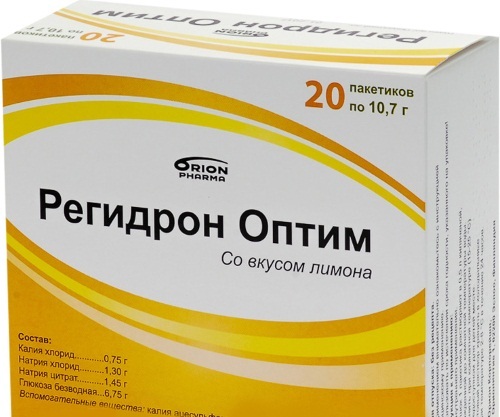
| Drug group | Name | Application |
| Antiemetics | Metoclopramide, Ondansetron | The medicine is taken orally before meals for 30 minutes with a little water. The adult dosage is 10-30 mg per day. Children are prescribed, taking into account body weight, 0.1-0.15 mg / kg once a day. The course of treatment lasts a maximum of 5 days. |
| Medicines to restore water-salt balance | Regidron, Trisol | The medicine is taken orally, the powder is previously diluted in cold boiled water. The average daily dosage for children and adults depends on weight, the doctor prescribes 80-100 mg / kg per day until the water and electrolyte balance is fully restored. |
| Sorbents | Atoxil, Smecta | The daily dosage for adults is 12-24 g. Children are advised to give the medicine from the age of 1 year. The dosage is 150-200 mg / kg. The daily dosage is divided into 3-4 doses. The course of treatment depends on the severity of the disease, in most cases it lasts 7-10 days. |
| Enzymes | Mezim, Festal | The medicine is taken orally without chewing, drinking plenty of water. The adult dosage is 1 to 2 tablets before meals. For children, the medicine is prescribed from the age of 3 on an individual basis. |
| Antispasmodics | No-Shpa, Spazmalgon | The adult dosage is 1-2 tablets 3 times a day. Children are recommended to give 20-40 mg 2 times a day, taking into account the age of the child and the state of the body. |
| Antipyretic drugs | Ibuprofen, Paracetamol | The recommended dosage for adults is 400-600 mg 2-3 times a day. Children are prescribed 20 mg / kg of medication per day, it is necessary to divide the dose into several doses. |
| Immunomodulators | Viferon, Arbidol | The medicine is applied rectally. Adults and children are recommended to use 1 suppository 2 times a day every 12 hours. The course of treatment lasts 5 days. |
| Antihistamines | Suprastin, Tavegil | For adults, the drug is prescribed 1 tablet 3-4 times a day. Children's dosage is ½ tablet 2-3 times a day. The medicine is recommended to be taken orally after meals. |
| Vasoconstrictor drops | Nazivin, Nazol | Children and adults are advised to drip 1-2 drops into each nasal passage 2-3 times a day. The treatment regimen depends on the person's age. The course of therapy lasts 3-5 days. |

In difficult situations, dehydration therapy is carried out, physiological solution is injected intravenously through a dropper.
In the complex therapy of norovirus infection, the use of folk remedies is allowed, if there are no serious contraindications or individual sensitivity to herbs. It is important to discuss treatment with your doctor to prevent an allergic reaction or possible complications.
Effective recipes for healers and healers for norovirus infection:
| Name | Recipe | Application |
| Rice decoction | Boil the rice in clean water, strain and cool the remaining water. | Rice broth effectively and quickly copes with intestinal disorders. It is recommended to use it warm, fresh 3-4 times a day, 0.5 tbsp. A folk remedy helps to restore the level of fluid in the human body, binds and removes toxic substances. |
| Mint and calendula | Dried plant leaves are mixed in 1 tbsp. l. Pour hot water (1 tbsp.) And leave for 30 minutes. The cooled broth is filtered and consumed inside. | Patients with norovirus infection are advised to drink a decoction of mint and calendula 3 times a day, 1 tbsp. Herbs help reduce inflammation. |
| Viburnum-based compote | Pour 250 g of berries with hot water (1 l). Put the resulting mixture on fire and cook for another 10 minutes. Cool the finished broth, strain and add 3 tbsp. l. natural honey. | Compote is recommended to drink 3 times a day for 0.5 tbsp. Kalina increases the body's defenses, its resistance to pathogenic bacteria, and also reduces high body temperature. |
| Pharmacy chamomile | Brew 1 tbsp. dry raw materials 1 tbsp. hot water. Soak for 30 minutes, strain and take orally. | Adults are advised to take 5 tbsp of chamomile broth. l. 2-3 times a day. Children's dosage is 2 tbsp. l. 3 times a day. |
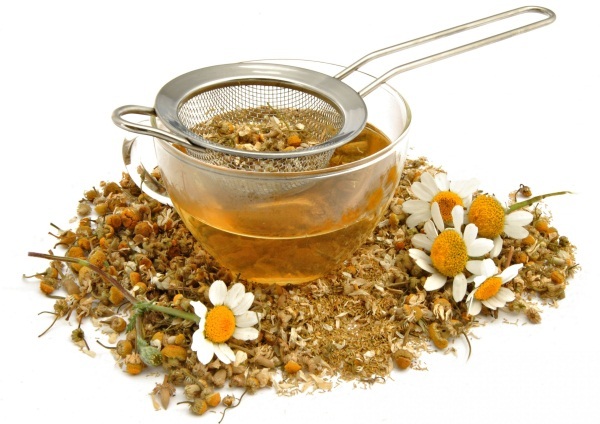
For rinsing the mouth, it is recommended to use a decoction of oak, chamomile or sage bark. They have bactericidal and anti-inflammatory effects.
What drugs should not be taken for enterovirus infections
With norovirus infection, antibacterial drugs should not be taken. With viruses, the active components of drugs are completely useless. But antibacterial agents have a detrimental effect on the beneficial microflora. The patient's condition will worsen, which will lead to serious complications.
Medicines should be selected strictly by a pediatrician or therapist. It will take into account the human condition, the development of norovirus infection and the individual characteristics of the human body.
Diet
Treatment of norovirus infection requires the patient to follow a strict diet. Proper nutrition will not only eliminate negative symptoms, but also reduce the burden on the gastrointestinal tract.
| Featured Products | Prohibited foods |
|
|
In case of inflammation of the mucous membrane of the gastrointestinal tract, dietary food should be as gentle as possible in order to prevent possible irritation. It is also important to prevent dehydration of the body, it is necessary to drink at least 2 liters of clean warm water every day in small portions (boiled or mineral water without gas, green or herbal tea).
In most cases, norovirus infection is uneventful. Symptoms disappear on their own after 2-3 days. Inpatient treatment will be needed for a person or a child if signs of an infectious lesion progress, severe dehydration of the body has appeared.
You cannot risk your health, you should immediately call a general practitioner or pediatrician. Otherwise, the likelihood of serious complications is high.
Norovirus infection video
Malysheva will tell you how to treat norovirus:



